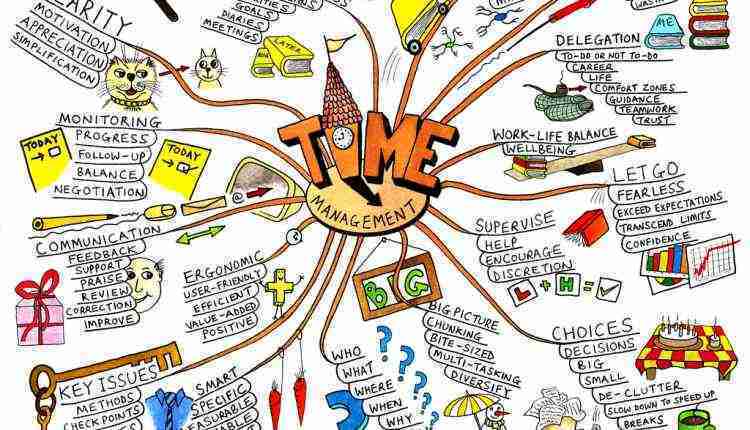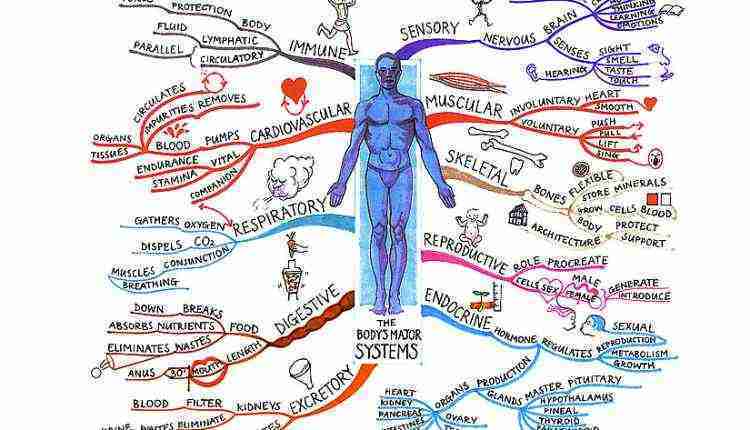Mind maps are a great way to understand and learn a concept. Even if you are not a visual learner or an artist, mind maps are easy to understand and make. Even rocket science is not rocket science thanks to mind maps..
But first, what is mind maps?
Imagine a tree with various branches growing in every direction. Each branch represents a new idea. For example: Imagine a tree with branches spread in various directions. In the tree, a hole is made inside which the title is written. Then we move to the branch where the main topics are written. Under the subtopics, a bunch of icons and extra details are added in bullet points. Add other branches to the already existing branch. These become subtopics. Go on and on.
This basically what mind maps mean. The hole is the brain, and the branches, are the nerve endings. Each new branch represents a new idea which is connected to one main topic. With this guide, you will not only be able to use a mind map but also learn how to make one. Let the artist in you wake. Even if you are not one, mind maps will be no trouble. Since you are making it for yourself, as long as you understand, there is nothing to worry about.
How to Use Mind Maps?
There is no limit to how you can use mind maps. From language study to science, from science to commerce and from commerce to arts. You can even use it outside school or college and in work, house, planners, etc. Mind maps are not just limited to study. It can help you in your day to day life like the budget, goals and stuff.
Means to create mind maps?

Although many prefer to create mind maps using paper, there are lots of apps (one such being MS Paint), too. You can use Microsoft notes, MS Paint, Evernote and OneNote. See what works out for you. In case you want to go for the traditional way, here is a list of things you will possibly require.
- Pen
- Pencil
- Colored pens
- Paper (preferred are plain white paper)
- Scale, eraser, sharpener
Yup, you don’t require anything outside of what you already own.
Mind Maps vs Linear Notes
Mind maps seem to be one heck of a job. Under this guideline, linear notes seem to be an easy choice. If you think like this, you can’t be more wrong. While creating these maps sure is a hectic chore as compared to linear notes, reviewing mind maps is far easier. The process of studying by mind map is far more fun and enjoyable. Monotony of word is broken by icons, picture, bullet points — visual aesthetic!
It helps make connection between two separate ideas which helps in finding relation between two topics. Below, is a mind map for Mandarin. A radicle is drawn in the center from where squiggly lines are drawn. An arrow points to various other characters. Underneath these characters are a bunch of English letters. An exclamation point is drawn under two characters in the same color. Beside the exclamation point is a little note written which states the relation between the two. Hence, making the subject better to understand.
Mind maps are better at summarizing things. They appear to have condensed but vital amount of information. Which really is the point, yea? Why go through the whole textbook, reading and writing items which are far from important?
One must also note how, things which are explained in three to four pages are condensed in one page but is easier to understand.
Choreographing a dance randomly is seen as a better idea than choreographing a dance linearly. Similar is the case with organizing an idea. Mind maps are amazing at this. As we draw out on the chapter on a sheet of page, the brain decodes the underlying ideas.
In one way, while making mind maps you are learning actively. You are in a state of learning. You are on your path of achieving greatness. No exaggeration since due to mind maps, you tend to understand at a deeper level. The monotony of going through notes makes the learning superficial. Often, students have complained of forgetting the said topic after giving exams. This is rare case with mind maps. Almost non-existent.
Not an artist
Mind maps are not supposed to be pretty or clean. Mind maps are supposed to be for you to understand. You don’t have to draw the rats like a Bio student would. With mind maps, you can just draw a triangle, a rectangle and then a squiggly line. The focus should not be one being able to draw properly. If you can not draw, using air bubbles are good, too. Rather, the focus should be on being able to understand the topic.
For example, the layout for this mind map is pretty simple. Not more than three colors, bunch of boxes and lines, few shorthand symbols and voila! Ask your inner perfectionist to go for a hike. Because contrary to popular belief, mind map is not a painting for an artist to paint.
How to make mind maps?
These are just basic guidelines. You’ve to work on your mind by yourself. If you follow these beginners’ guidelines, you’re good to go.
- Read through the chapter, underline the important points and then read once again. Imagine them out on a paper.
- It’s better to star from the center and then spread your wings to rest of the page. Write the topic first. Distinguish the main topic from rest by emphasizing it.
- Use colours. This keeps the mind map from being monotonous. Refrain from using more than three colors. Too much colours is equal to an eyesore. Although, if you want a rainbow, no one will stop you. While we are at this, keep a color code. This mind map uses purple for examples, green for definitions and orange for scientists.
- Associate every branch to the main branch. A tree, remember? Tertiary branch is connected to secondary while the secondary branch is connected the tree trunk. Using this analogy, connect the mind maps.
- There’s no rule saying you’ve to use images. Although, it is better for you to use image as it helps in understanding.
- Use different sorts of font. Not more than three.




